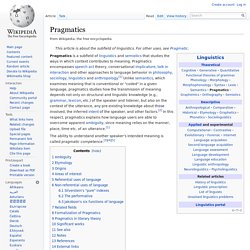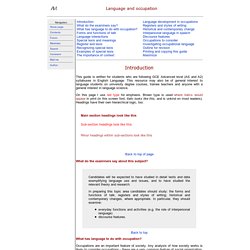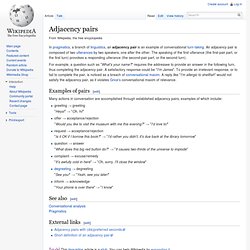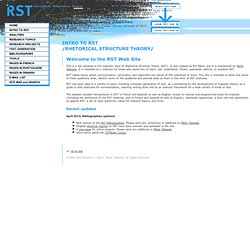

8 Excellent Books on Discourse Analysis for Research Sudents. Pragmatics. Pragmatics is a subfield of linguistics and semiotics that studies the ways in which context contributes to meaning.

Pragmatics encompasses speech act theory, conversational implicature, talk in interaction and other approaches to language behavior in philosophy, sociology, linguistics and anthropology.[1] Unlike semantics, which examines meaning that is conventional or "coded" in a given language, pragmatics studies how the transmission of meaning depends not only on structural and linguistic knowledge (e.g., grammar, lexicon, etc.) of the speaker and listener, but also on the context of the utterance, any pre-existing knowledge about those involved, the inferred intent of the speaker, and other factors.[2] In this respect, pragmatics explains how language users are able to overcome apparent ambiguity, since meaning relies on the manner, place, time etc. of an utterance.[1] The ability to understand another speaker's intended meaning is called pragmatic competence.[3][4][5] Example: "I"
Linguistics Research Digest. Department of Linguistics. DiesingWandW. Ship naming and launching. Ceremonial ship launching is the process of transferring a vessel to the water.

It is a naval tradition in many cultures, dating back thousands of years. It has been observed as a public celebration and a solemn blessing. In addition to the size and weight of the vessel, ship launching imposes stresses on the ship not met during normal operation, and represents a considerable engineering challenge, in addition to a public spectacle. Methods of launch[edit] Stern-first launching[edit] Normally they are arranged perpendicular to the shore line (or as nearly so as the water and maximum length of vessel allows) and the ship is built with its stern facing the water. On launching, the vessel slides backwards down the slipway on the ways until it floats by itself.[3] Sideways launching[edit] Some slipways are built so that the vessel is side on to the water and is launched sideways. Air-bag launching[edit] History[edit] John Austin on performative utterances. John Austin on performative utterances (From: J.

L. Austin, How to Do Things with Words, ed. J. O. [Defining the Performative] Utterances can be found… such that: The Science of Sarcasm? Yeah, Right. Pragmatics. Introduction This guide is written for students who are following GCE Advanced level (AS and A2) syllabuses in English Language.

This resource may also be of general interest to language students on university degree courses, trainee teachers and anyone with a general interest in language science. If you are unsure whether to spend time finding out about this subject, you might like to jump straight to the brief section on pragmatics for exam students. On this page I use red type for emphasis. Language and power. Introduction.

Language and occupation. Introduction This guide is written for students who are following GCE Advanced level (AS and A2) syllabuses in English Language.

This resource may also be of general interest to language students on university degree courses, trainee teachers and anyone with a general interest in language science. On this page I use red type for emphasis. Brown type is used where italics would appear in print (in this screen font, italic looks like this, and is unkind on most readers). Headings have their own hierarchical logic, too: Back to top of page What do the examiners say about this subject? Back to top What has language to do with occupation? Occupations are an important feature of society. Occupations develop their own special language features, and use those of the common language in novel or distinctive ways.
Adjacency pairs. In pragmatics, a branch of linguistics, an adjacency pair is an example of conversational turn-taking.

An adjacency pair is composed of two utterances by two speakers, one after the other. The speaking of the first utterance (the first-pair part, or the first turn) provokes a responding utterance (the second-pair part, or the second turn). For example, a question such as "What's your name? " requires the addressee to provide an answer in the following turn, thus completing the adjacency pair. A satisfactory response could be "I'm James". Examples of pairs[edit] Many actions in conversation are accomplished through established adjacency pairs, examples of which include: greeting → greeting "Heya! " offer → acceptance/rejection "Would you like to visit the museum with me this evening? " request → acceptance/rejection "Is it OK if I borrow this book?
" question → answer "What does this big red button do? " complaint → excuse/remedy. Rhetorical Structure Theory. Welcome to the RST Web Site This is a site devoted to the linguistic topic of Rhetorical Structure Theory (RST).

It was created by Bill Mann, and it is maintained by Maite Taboada. It is intended as a resource for those who would like to learn, use, understand, refute, supersede, admire, or question RST. RST raises issues about communication, semantics, and especially the nature of the coherence of texts. Grice's Maxims. Grice-final. In which Johnson cites Grice's Maxims to Explain Excess Warning Labels.